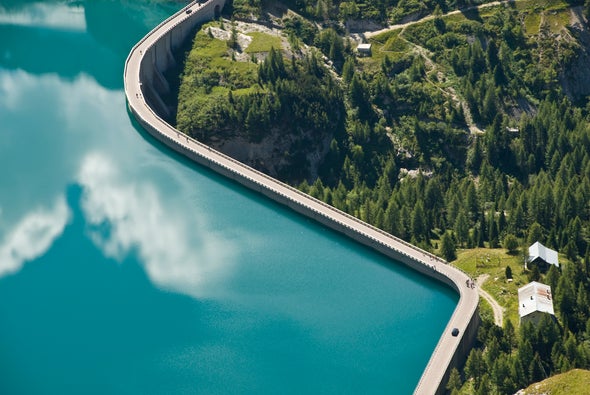This is Scientific American's 60-second Science, I'm Annie Sneed.
Solar. Wind. Hydropower. These renewable energy sources are all much better for the climate than fossil fuels, right? Well, yes for wind and solar. But it turns out that the picture for hydropower is more complicated than we think.
A new study by the Environmental Defense Fund analyzed the climate impacts of 1,500 hydropower facilities across the globe. That accounts for about half of hydropower generation worldwide. The researchers looked at whether the facilities behave as a greenhouse gas sink or as a source. To figure this out, they investigated all the different components that help determine a hydropower facility's greenhouse gas emissions.
"There are so many factors that contribute to greenhouse gas emissions from hydropower—but essentially, the majority of greenhouse gas emissions arise from the reservoir itself, as vegetation and soils are submerged underwater in the dam that is used for the hydropower generation."
Ilissa Ocko, a senior climate scientist at the Environmental Defense Fund and co-author of the study. As the submerged vegetation decays, it releases methane or CO2.

"The larger the surface area of the reservoir, the more greenhouse gases are going to be emitted from that reservoir. Also, the temperature plays a role as well—how warm the reservoir is will affect how much greenhouse gases are produced and emitted from the reservoir."
Through their analysis, Ocko and her co-author Steven Hamburg, also with the Environmental Defense Fund, discovered that the climate impacts of hydropower run the gamut. The good news is that some facilities perform just as well as wind and solar. But shockingly, more than 100 facilities are actually worse for the climate than fossil fuels. The study is in the journal Environmental Science & Technology.
This finding doesn't mean we should forget about hydropower.
"But we just need to be careful to make sure that we have climate benefits. There are a lot of situations where hydropower can be on par with wind and solar. So it really depends on the specific facility."
Thanks for listening for Scientific American — 60-Second Science. I'm Annie Sneed.












